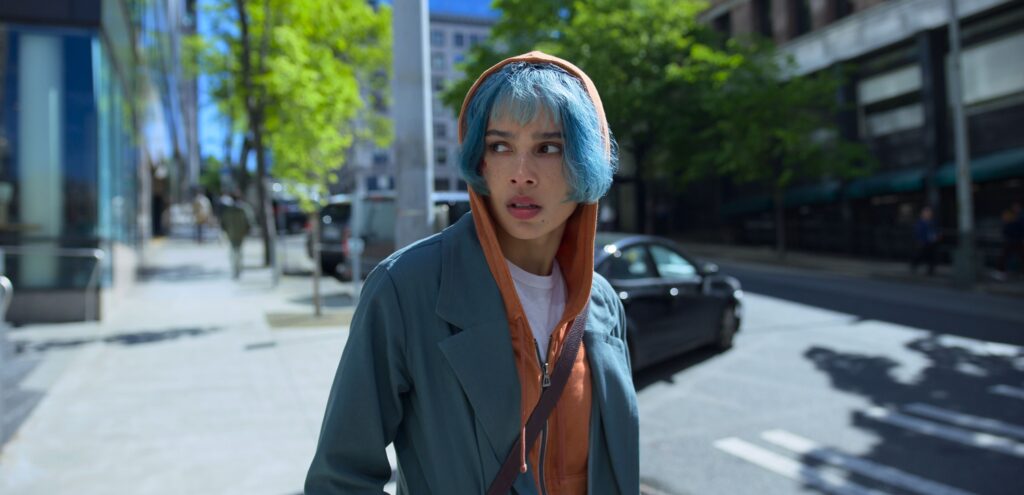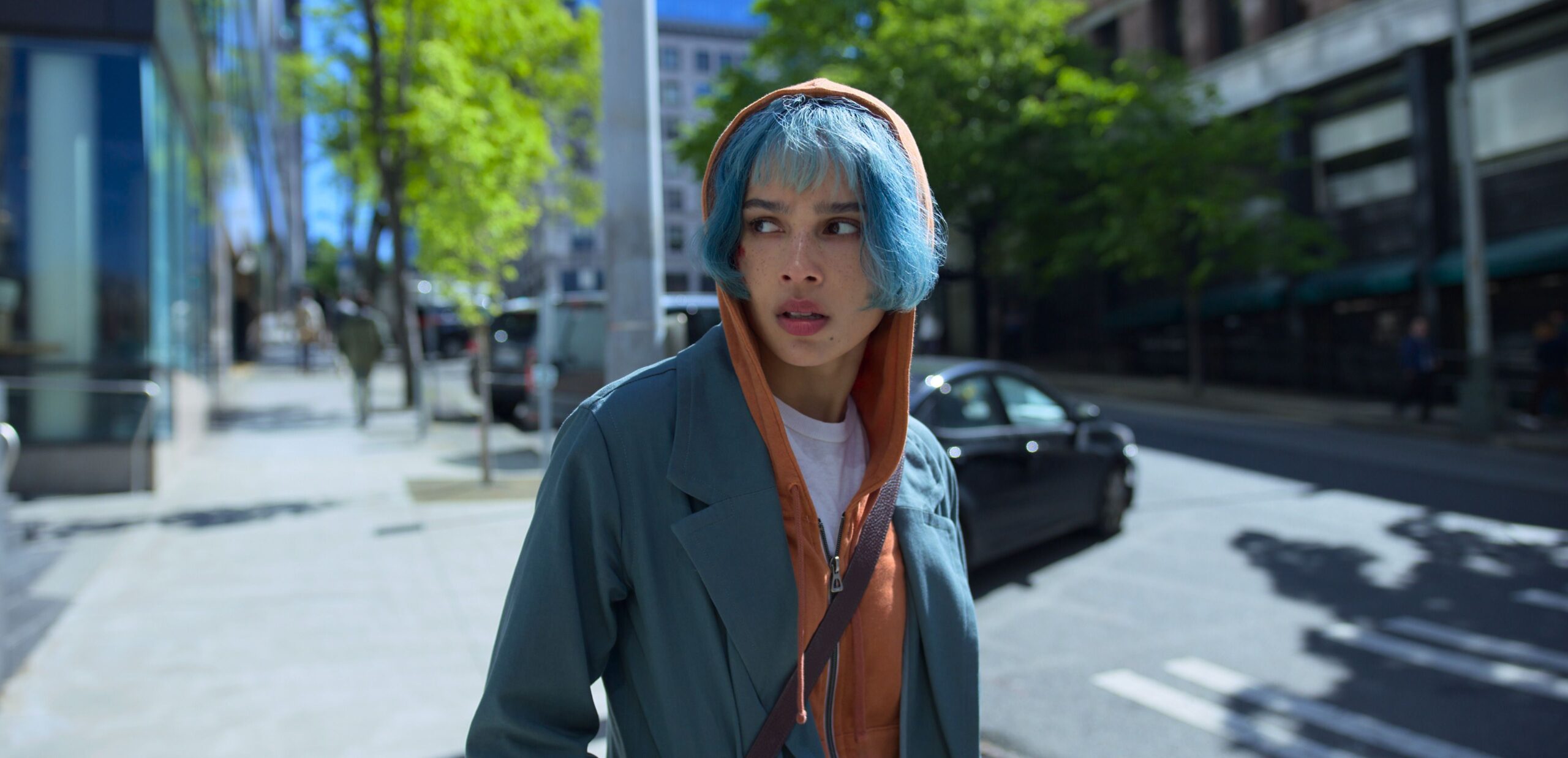A tale of personal growth during a time experienced by every person on the planet. The trials and tribulations of the past two years. A modern spin on Alfred Hitchcock’s classic film, Rear Window. A film I can only describe as a technoir (hopefully the pun sticks for future filmmakers). A story of corporate greed like Steven Soderbergh’s recent string of films have repeatedly tackled. This isn’t describing a vast array of work, but more impressively, it’s a few of the many ways to describe the utter brilliance that is the latest film from Soderbergh, Kimi. Taking the core elements of what has been universally experienced during the height of the pandemic, Soderbergh is able to craft something spectacular here. Like a bottle placed too close to the edge of a surface, most people who took the pandemic seriously had a moment where we felt on the brink of something. Teetering over the edge, we hope we won’t fall, but if we do, we can only hope that we don’t break.
Thus, the stage is set for Kimi, as we are introduced to Angela Childs, played by an expert Zoë Kravitz. An agoraphobe who is reeling from the effects of COVID-19 isolation and her own experiences, Childs is thrust into a world of corporate greed and malfeasance. Upon discovering a possible crime through her daily responsibilities of “justified surveillance”, she is confronted with a choice: how essential is action versus inaction. Unable to even meet her own neighbors, we witness a near breakdown of our protagonist from the very opening moments of the film. As someone who deeply struggled with reintegration to society after the initial height of COVID-19, a film like this feels wholly personal and true to its audience. Soderbergh and acclaimed screenwriter David Koepp don’t shy away from the blatant notion that the pandemic had, and continues to have, an everlasting effect on mental health. It feels revelatory in how simply the film portrays it, without an ounce of cynicism or mockery to be found. On the contrary, Kimi portrays Childs as someone who is best equipped to handle the situation she stumbled upon.

From the very first shot, Soderbergh details the sort of artificial construct so commonly found with the ever-looming veil of technology that surrounds society. From faking everything on social media to a messy garage reorganized to have a “professional” Zoom background, it’s apparent that those who have found themselves in charge of possibly multi-billion-dollar corporations are barely getting by. With noisy children trapped in the house alongside them, Soderbergh depicts them moments away from a breakdown, revealing that the suit they are wearing isn’t even real from the waist down. Childs, who even at a corporate level seem to disgustingly treat her as less than, is much more capable and equipped to handle a situation like this than anybody she reports to. With a physical performance that is as calculated and precise as the camera Soderbergh follows her with, Kravitz is operating on another stratosphere here. Her initial detective work leaves no question in the viewer on whether or not this possible crime will be brought to light. It is only when we witness the ensuing “corporate hot potato” that confidence begins to falter. It is here, at the nearly exact halfway point of the film, that Soderbergh ignores all safety protocols and goes full steam ahead.
As Childs is forced to leave her sanctuary, the initial departure is a complete visceral assault on the senses. Bathed in glaring light, incomprehensible sounds, and enough Dutch angles to make you think your losing your balance and grip on reality, Soderbergh makes full use of every cinematic trick at his disposal. At no point feeling like a gimmick, it’s transfixing to behold and quite literally had me unable to breathe. Consistently feeling seconds away from a panic attack, Kravitz hugs walls and weaves in between masked civilians as if her life depended on it. Upon reaching her destination, which raises its own fair share of questions, the latter half of the film allows Soderbergh to fully dive into his attack on how corporations treat those on the outside, or better yet, those who will affect the bottom line, ethics be damned. From a judicial and societal level, this country usually places blame on the victims of a crime over those actually responsible. Whether it be racial injustice, sexual assault, or corporate malpractice like KIMI tackles, Soderbergh has placed our protagonist quite literally in the belly of the beast. As a heart-pounding chase ensues, it’s difficult to not notice Soderbergh’s blatant visuals storytelling.
Trailed by both our own shadows and the very cell service we rely on; Kimi highlights the dangers that come with modern technology so engrained within society. We are quite literally never alone, and obviously there are many horrors that live alongside this fact of life. Yet, Soderbergh also doesn’t forget to point out that human connection and being surrounded by others is essential to survival. In the case of the film, it’s taken quite literally on more than one occasion. Within a lean 89-minute runtime, Soderbergh leaves no stone unturned throughout Kimi. It is a genuinely impressive feat from a filmmaker that has proved himself time and time again to be one of the most hardworking artists in the business. Deeply engrossing, thoroughly relevant, and a clinic in stylistic expression being used for thematic and textual relevancy, Kimi is a true work of art from Soderbergh. In all likelihood, it will be remembered as one of the few definitive films detailing the COVID-19 experience in an impactful and meaningly way.
Kimi is currently streaming on HBO Max.
